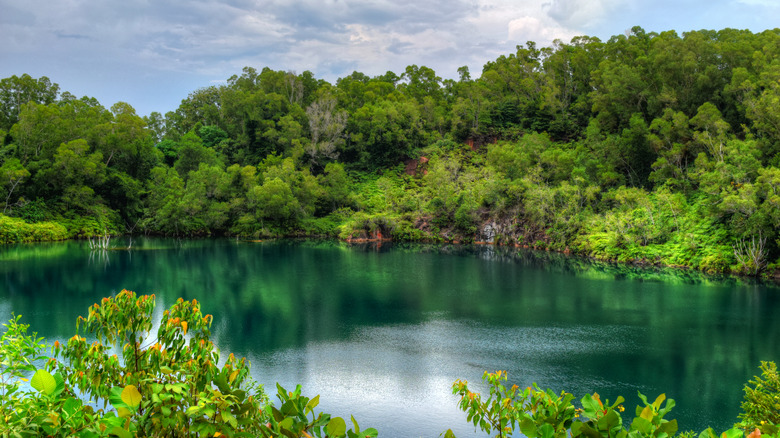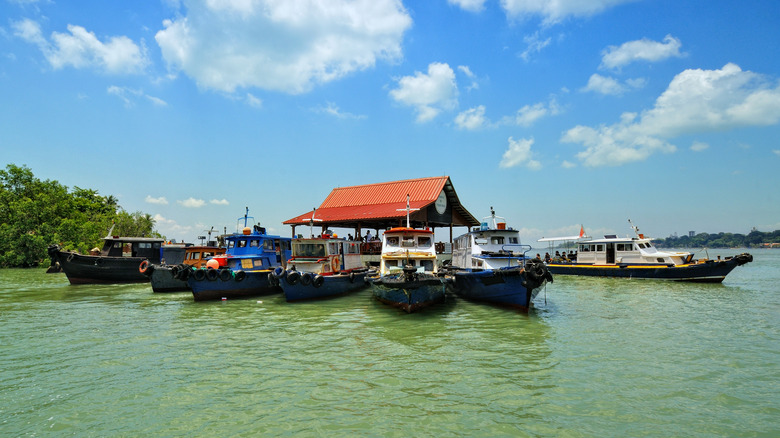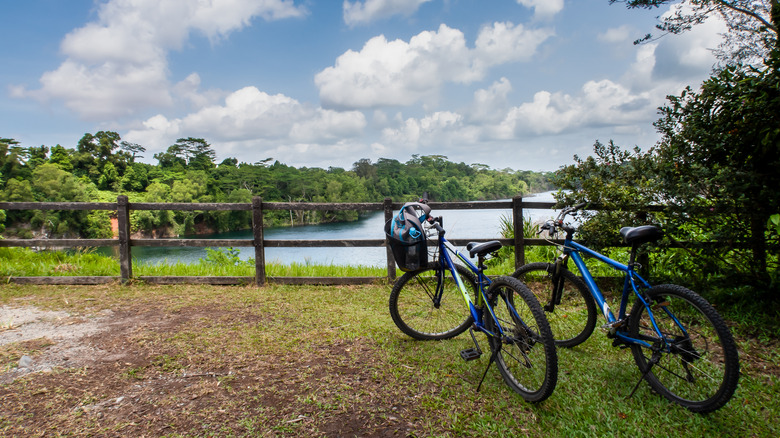Escape Singapore's City Life At This Hidden Island Full Of Wildlife And Lush Scenery
With its futuristic skyline, bustling hawker centers filled with mouthwatering food, and the world-renowned Changi Airport — the only airport that's truly worthy of a long layover — Singapore's growing popularity as a top tourist destination in Southeast Asia is undeniable. Because whether you're looking up at the soaring Marina Bay Sands or strolling through the famous Gardens by the Bay park, it's pretty clear that the city-state's well-earned reputation as the perfect blend of innovation and luxury shines through in everything it has to offer.
That said, given Singapore's compact size and sky-high buildings, you might be surprised to learn that, just a 10-minute boat ride from the Changi Ferry Terminal, lies the serene oasis of Pulau Ubin. Tucked away from the mainland's chaotic urban energy, the small island of Pulau Ubin offers visitors a glimpse into the country's more rural past.
Home to dense forests, wetlands, abandoned quarries that once supplied the country's granite, and the remnants of its 1960s kampong — aka, village — Pulau Ubin feels like something out of a storybook. But beyond its historic roots, the spot has recently become a sort of outdoor playground that's perfect for hiking, cycling, and wildlife-spotting — ultimately making it an ideal escape from city life.
Planning your visit to Pulau Ubin
A welcome break from Singapore's most popular attractions — which have gotten busier and more crowded due to Southeast Asia's over-tourism boom — visiting Pulau Ubin is incredibly easy. First, you'll need to make your way over to the Changi Point Ferry Terminal and find one of the small ferries — a generous term, considering how small they are — or "bumboats" onto the island. These typically operate starting from 6:00 a.m. and will get going once they've filled up the nine or 12 spots available onboard.
Price-wise, the fare should cost around $4 per person each way — plus an extra $2 if you're bringing a bike — and must be paid in cash. As for getting back, the last boat typically departs Pulau Ubin at 6:00 p.m., so make sure you plan ahead for that unless you're planning to camp overnight.
Speaking of camping, even though spending the night at Pulau Ubin is allowed for both foreigners and locals, you'll first need to register for a permit via the official website at least two weeks in advance. During the application process, you'll be prompted to choose between the four sites available — Jelutong 1 and 2, Mamam Beach, and Endut Senin — as well as provide your check-in and check-out dates. As for supplies, it's important to note that, although the island has a few restaurants and shops ready to serve up some authentic local dishes during your visit, most of these close early — so make sure you've either brought or bought everything you might need before it gets too late.
Spending a day on Pulau Ubin
Once you've made it to Pulau Ubin, quickly head over to one of the island's bicycle shops near the ferry. Available to rent starting from $8 for a full day, these bikes will be the best way to get around the island — and get in a good workout while you're at it. From there, you can then choose between the islands' three main routes — which are split into the Western, Eastern, and Northern trails — for where to go first. As a pro tip, we suggest starting your day by heading over to the Chek Jawa Wetlands — reachable via the Eastern route — for a peek at the island's diverse ecosystems during low tide. Alternatively, there's also the Sensory Trail, which features a 1-mile route that'll take you along old plantations, mangroves, and traditional homes.
For travelers who'd prefer to explore on foot, the crown jewel of Pulau Ubin is, without a doubt, Puaka Hill. The tallest peak on the island, the entire trail is less than 0.2 miles long — but the climb is very steep, so get ready to sweat it out for a bit. Thankfully, from the top, you'll be rewarded with some pretty impressive views of the Pekan Quarry shining bright blue just below.
Lastly, whether you're on two wheels or two feet, make sure to keep your eyes peeled for the island's more than 500 species of mammals, reptiles, birds, and butterflies, as well as over 700 types of local flora. From swinging macaques to hornbills, geckos, snakes, and even pangolins, you never know what you might spot just around the corner.


